Storybooks
These storybooks are available for download under a Creative Commons Attribution-NonCommercial-NoDerivatives 4.0 International License.
Jump To: Akaguagaankaa, The Story of a Giant | Big John and Little Henry | Egg Island | Iluvaktuq | Iluvaktuq and Paluqtalek | Mary Makes a Qaspeq | Morning Star | Kukugyarpak | The Raven and the Sea Anemone | The Raven Story and the Boulders | Slave Girl | Star Navigation Reader
Materials Directly Related to Yupiaq Elders
The materials, including but not limited to storybooks and videos of elders, may be freely downloaded and shared. However, any changes to these materials may not be shared. Working with Yupiaq elders and scholars, we painstakingly recorded the elders as they spoke Yup’ik. Recordings were transcribed in Yup’ik, and then translated into English. Each phase of this process was checked and rechecked to ensure that the elders’ words and meaning were preserved while simultaneously making these materials accessible to others. For these reasons these materials may not be altered and shared.
Akaguagaankaa, The Story of a Giant
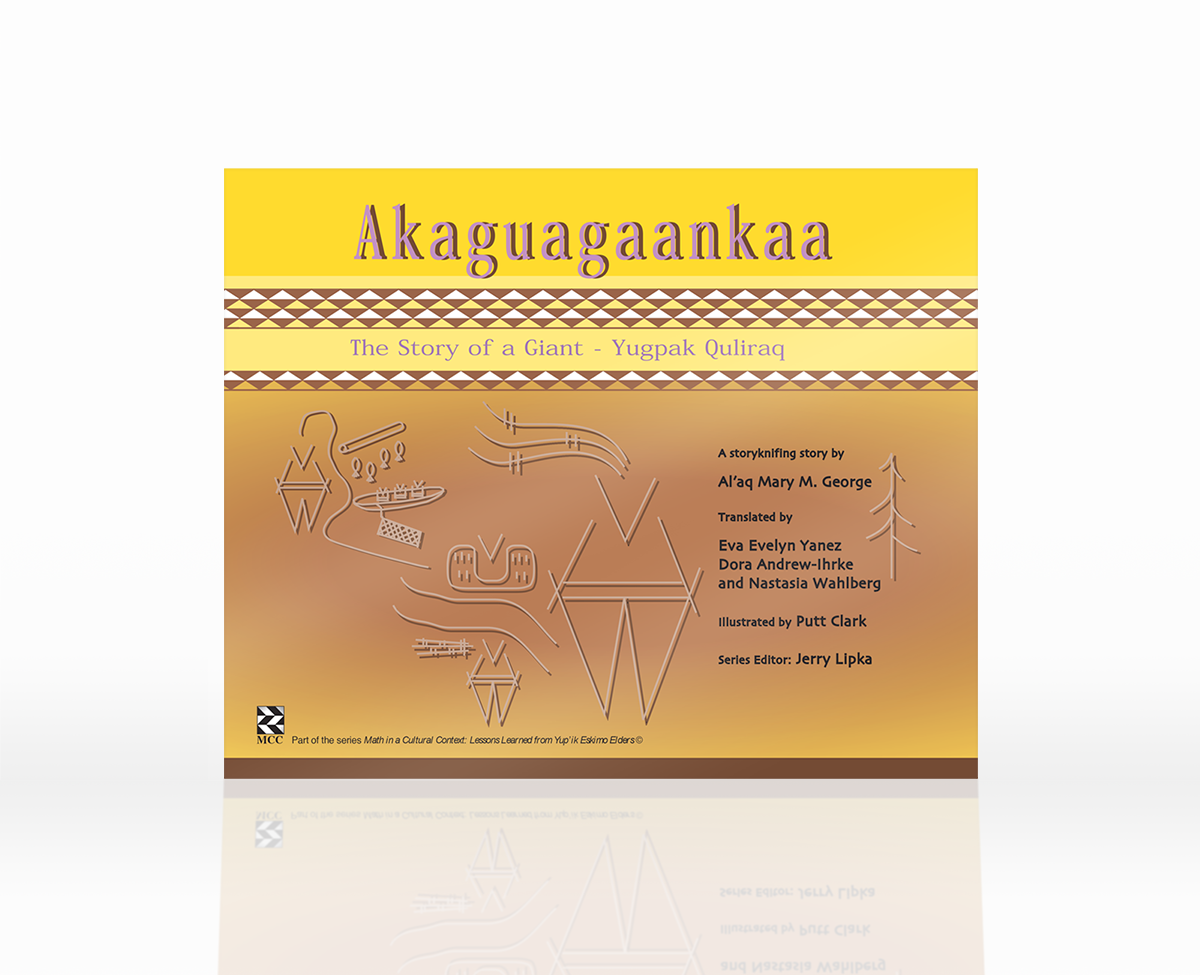
A traditional Yup'ik story told by Mary M. George
From the back cover: This story, like all of the Yup’ik stores in the Math in a Cultural Context (MCC) series, presents a glimpse into Yup’ik culture and life as it was lived in the past, but the values and joy that underlie this story carry into the present. The Giant was told to us by the late Mary George of Akiachak, Alaska.
The Giant represents a literature genre that has features of oral story telling accompanied by “performance.” In this case, the performance is storyknifing. Storyknifing symbols are akin to action characters in that they animate the oral presentation. The young children’s story stresses the Yup’ik value of listening to your elders in a fun and entertaining way. The Yup’ik symbols for houses, children, the Giant, and actions such as singing, talking or moving is what makes this particular story genre unique. Elementary school children anywhere will enjoy this story.
Connections to mathematics can also be made by emphasizing perspective, what the symbols represent, and the importance of those symbols. These connections enrich the story with the inherent mathematics of the Yup’ik culture. Most importantly, however, we hope you enjoy this wonderful story.
![]() This work is licensed under a Creative Commons Attribution-NonCommercial-NoDerivatives 4.0 International License.| Back to Top
This work is licensed under a Creative Commons Attribution-NonCommercial-NoDerivatives 4.0 International License.| Back to Top
Big John and Little Henry
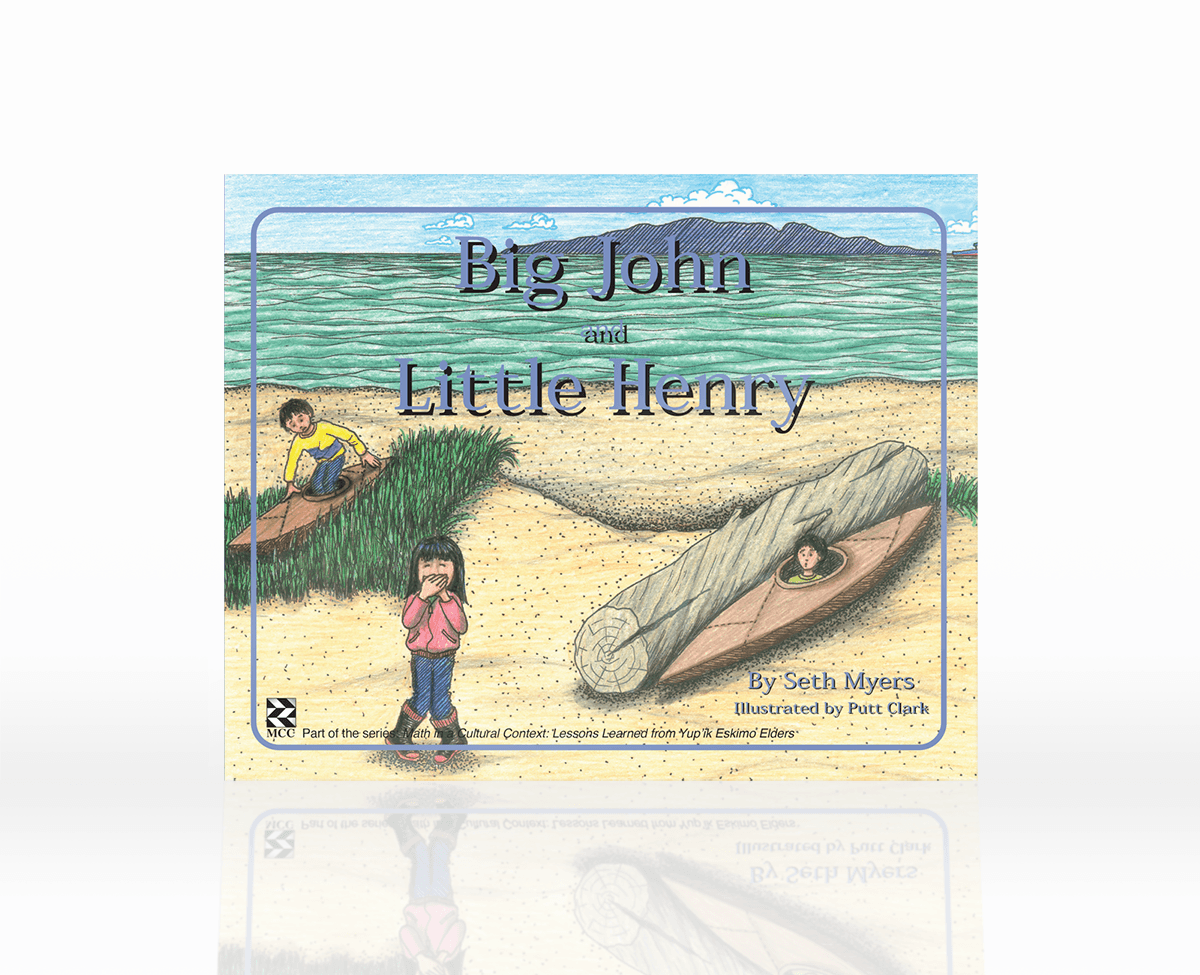 Author: Seth Myers
Author: Seth Myers
From the back cover: Big John and Little Henry is a fictionalized account of two friends who want to please each other by each building a kayak for the other. Stories form an essential part of the Math in a Cultural Context series (MCC) as a way for students to relate to Alaska and some of its unique characteristics. This story includes the way Yup’ik Eskimo elders measure. The genius of their measuring is that it often takes into account the person, the object being made, and its use. Thus, their way of measuring embeds proportional thinking. The story includes a few body measures used in kayak making. Through the characters and the comical turn of events students learn about body measures and proportional thinking. Increasingly, MCC will produce stories that embed both mathematical concepts and unique cultural, geographical, or historical information about southwest Alaska. Students enjoy learning in this way.
![]() This work is licensed under a Creative Commons Attribution-NonCommercial-NoDerivatives 4.0 International License.| Back to Top
This work is licensed under a Creative Commons Attribution-NonCommercial-NoDerivatives 4.0 International License.| Back to Top
Egg Island
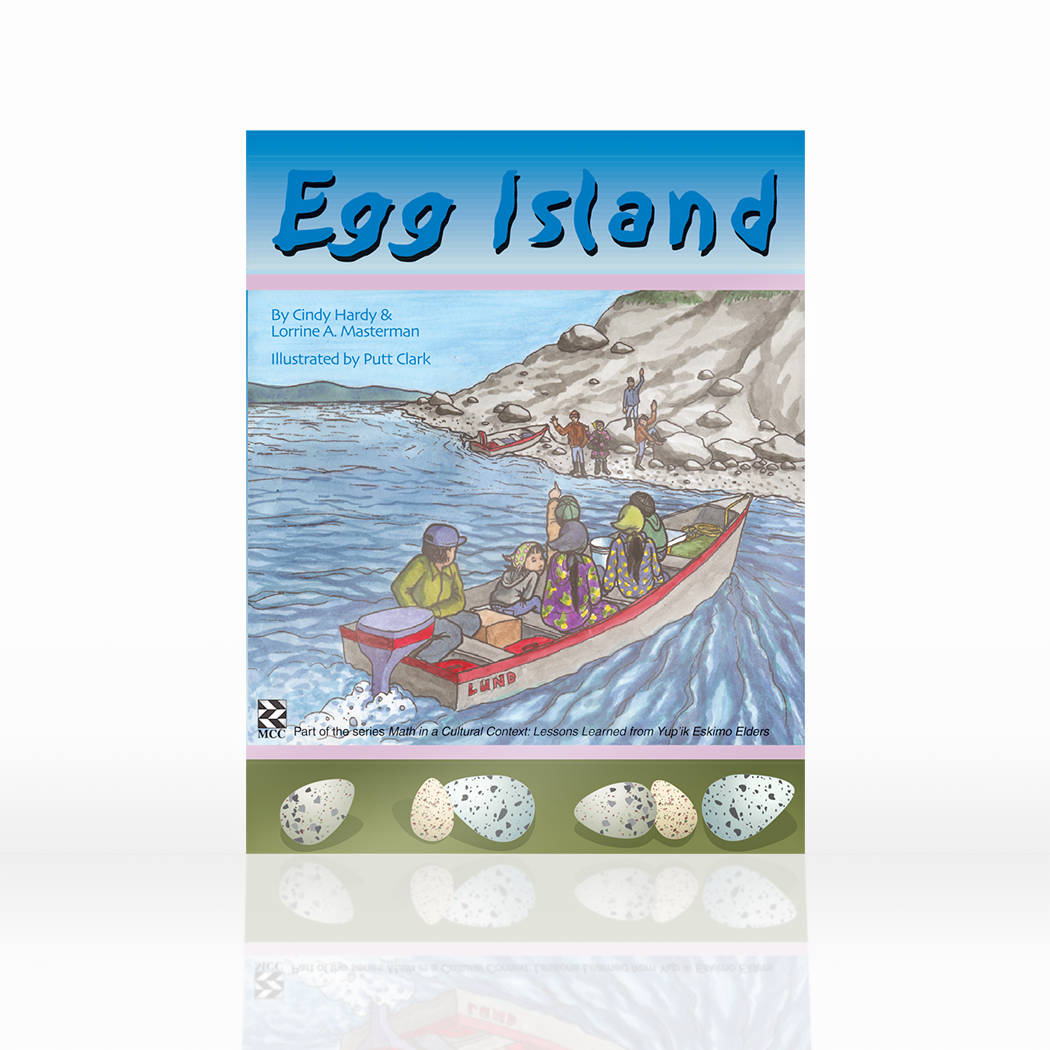 Authors: Cindy Hardy, Lorrine A. Masterman
Authors: Cindy Hardy, Lorrine A. Masterman
From the back cover: Egg Island is a fictionalized account of how people from the southwest part of Bristol Bay engage in collecting, sorting, and storing murre and kittiwake eggs. Many of the contributors to this story have participated in the activities described in Egg island. Some of the characters in this story are people from Togiak.
The story is written from the point of view of a second-grade girl living in Fairbanks, Alaska, who visits her relatives in Togiak and then participates in "egging." The story provides an interesting portal into present-day Yup'ik Eskimo life along the southwest coast. It provides students with a way of learning about cultural traditions, geography, ecology, and subsistence living.
Complementary Module
This story accompanies the Going to Egg Island module.![]() This work is licensed under a Creative Commons Attribution-NonCommercial-NoDerivatives 4.0 International License.| Back to Top
This work is licensed under a Creative Commons Attribution-NonCommercial-NoDerivatives 4.0 International License.| Back to Top
Iluvaktuq
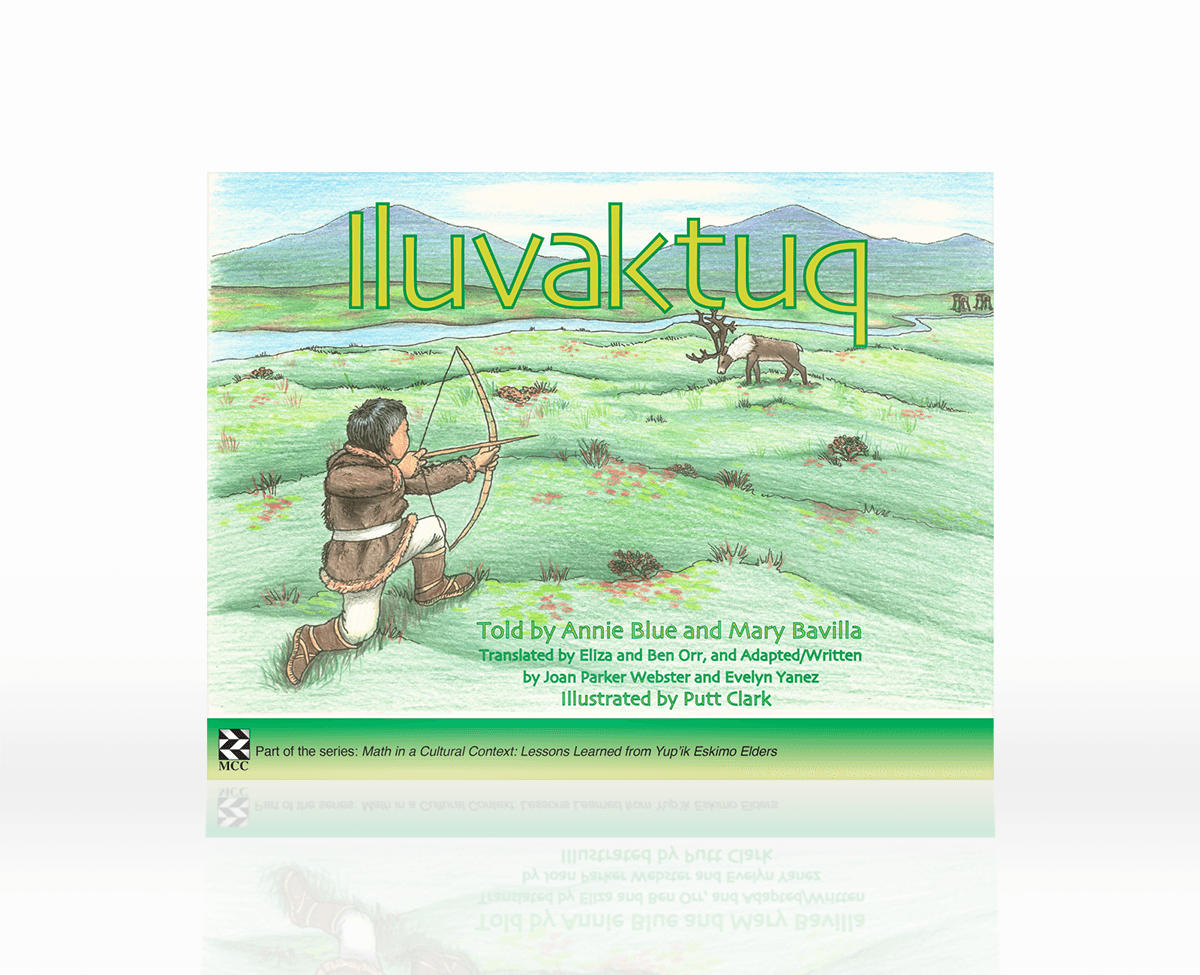 A traditional Yup'ik story told by Annie Blue and Mary E. Bavilla
A traditional Yup'ik story told by Annie Blue and Mary E. Bavilla
Iluvaktuq is a traditional Yup’ik story, told by Annie Blue and Mary E. Bavilla. It accompanies the curriculum module Patterns and Parkas: Investigating Geometric Principles, Shapes, Patterns, and Measurement, which part of the series Math in a Cultural Context (MCC): Lessons Learned from Yup’ik Eskimo Elders. MCC is the result of a long-term collaboration with Yup’ik elders, Yup’ik teachers and Alaskan school districts. These supplemental math modules for grades 1-7 bridge the unique knowledge of Yup’ik elders with school-based mathematics. Our classroom-based research strongly suggests that students engaged in this curriculum can develop deeper mathematical understanding that students who engage with the more procedure-oriented paper and pencil curriculum. MCC’s research has shown that these modules have been effective in enhancing students’ mathematical learning. MCC also produces stories that embed both mathematical concepts and unique cultural, geographical, or historical information about southwest Alaska.
This story is about a famous historical Yup’ik warrior who lived during the Great War, during the Russian occupation of Alaska. The story tells about the importance of family lineage to Yup’ik people and the history behind the design of the parkas that his descendents still wear today. Stories are an important part of the MCC series, as a way for students to relate to Alaska and some of its unique characteristics. These two stories help connect to the math of the module through parka pattern designs.
Complementary Module
This story accompanies the Patterns and Parkas module. ![]() This work is licensed under a Creative Commons Attribution-NonCommercial-NoDerivatives 4.0 International License.| Back to Top
This work is licensed under a Creative Commons Attribution-NonCommercial-NoDerivatives 4.0 International License.| Back to Top
Iluvaktuq and Paluqtalek: Two Yup'ik Warrior Stories
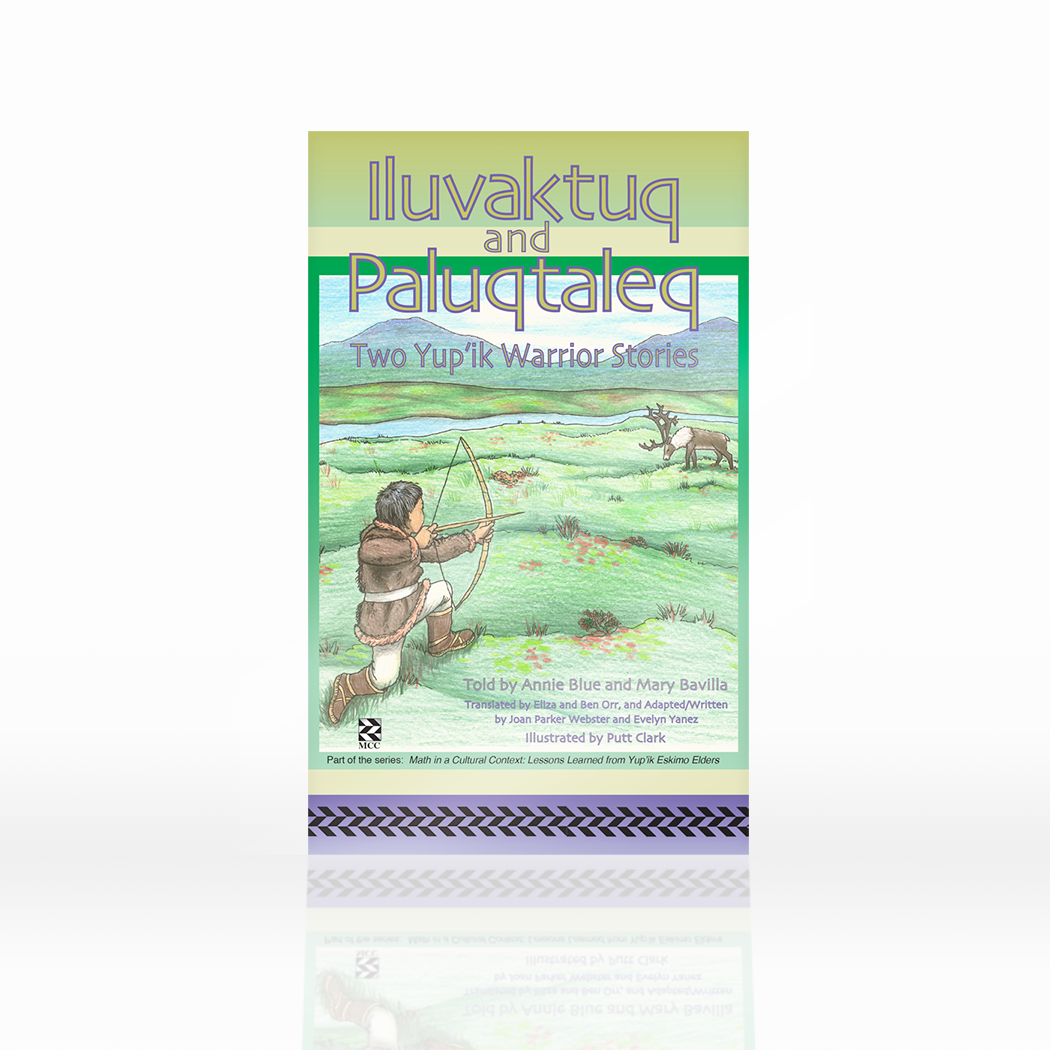 Traditional Yup'ik Stories told by Annie Blue and Mary E. Bavilla
Traditional Yup'ik Stories told by Annie Blue and Mary E. Bavilla
From the back cover: Iluvaktuq and Paluqtalek: Two Yup’ik Warrior Stories are traditional Yup’ik stories, told by Annie Blue and Mary E. Bavilla. It accompanies the curriculum module Designing Patterns: Exploring Shapes and Area, which part of the series Math in a Cultural Context (MCC): Lessons Learned from Yup’ik Eskimo Elders. MCC is the result of a long-term collaboration with Yup’ik elders, Yup’ik teachers and Alaskan school districts. These supplemental math modules for grades 1-7 bridge the unique knowledge of Yup’ik elders with school-based mathematics. Our classroom-based research strongly suggests that students engaged in this curriculum can develop deeper mathematical understanding that students who engage with the more procedure-oriented paper and pencil curriculum. MCC’s research has shown that these modules have been effective in enhancing students’ mathematical learning. MCC also produces stories that embed both mathematical concepts and unique cultural, geographical, or historical information about southwest Alaska.
These two stories are about two Yup’ik warriors who were part of a group or warriors living during the Great War, during the Russian occupation of Alaska. Stories are an important part of the MCC series, as a way for students to relate to Alaska and some of its unique characteristics. These two stories help connect to the math of the module through parka pattern designs.
Complementary Module
This story accompanies the Designing Patterns module.![]() This work is licensed under a Creative Commons Attribution-NonCommercial-NoDerivatives 4.0 International License| Back to Top
This work is licensed under a Creative Commons Attribution-NonCommercial-NoDerivatives 4.0 International License| Back to Top
Mary Makes a Qaspeq
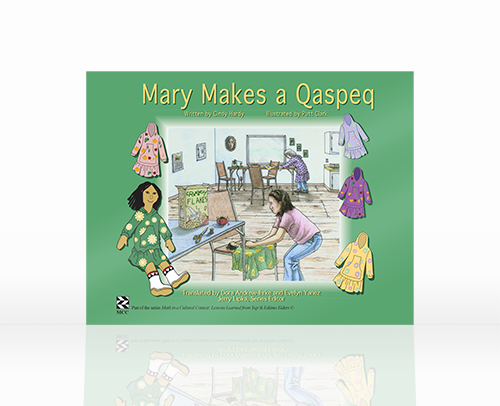 Written by Cindy Hardy
Written by Cindy Hardy
From the back cover: Mary Makes a Qaspeq is a fictionalized account of a typical relationship between a young girl and her grandmother. The story was developed from the childhood experiences of Evelyn Yanez and Dora Andrew-Ihrke who grew up in Togiak and Aleknagik respectively, two villages in southwest Alaska. This story chronicles Mary visiting with her grandmother. Her grandmother is making a qaspeq, a versatile women’s garment that can be worn in the house and outside while berry picking. Mary not only observes her grandmother make a qaspeq, but she begins to make an outfit for a doll (sugaq). Mary makes the doll for her best friend Christine, who will be spending the summer at fish camp.
![]() This work is licensed under a Creative Commons Attribution-NonCommercial-NoDerivatives 4.0 International License| Back to Top
This work is licensed under a Creative Commons Attribution-NonCommercial-NoDerivatives 4.0 International License| Back to Top
New in 2020Morning Star: Agesqurpak
 A traditional Yup'ik story told by Annie Blue
A traditional Yup'ik story told by Annie Blue
From the back cover: The late Annie Blue, a revered elder and wonderful storyteller from Togiak, Alaska, continues to contribute to the Math in a Cultural Context (MCC) series and to the next generation through the stories she told. Annie’s deep cultural knowledge, dedication and caring attitude were recognized by the University of Alaska Fairbanks in 2009 when she was awarded an honorary doctorate.
The Morning Star story has become a favorite of Eva Evelyn Yanez, who listened and learned from Annie’s storytelling beginning in her childhood. Evelyn has retold Morning Star to teachers, aides, and students at nine schools that comprise the Southwest Regional School District. The story has also been told at MCC’s workshops for teachers and at summer math institutes. It is always well received.
Each Yup’ik story in the MCC series has embedded Yup’ik values about how to live. This story is no different. The MCC series typically integrates Yup’ik stories to further establish the context and also make connections to the mathematics in complementary materials. This story can be used independently of the MCC mathematics series, or it can be used with some of the activities in Measuring Proportionally.
![]() This work is licensed under a Creative Commons Attribution-NonCommercial-NoDerivatives 4.0 International License| Back to Top
This work is licensed under a Creative Commons Attribution-NonCommercial-NoDerivatives 4.0 International License| Back to Top
Kukugyarpak
 A traditional Yup'ik story told by Annie Blue
A traditional Yup'ik story told by Annie Blue
From the back cover: When the young hunter Kukugyarpak gets lost on the icy ocean while out on his kayak, he begins an epic journey filled with fantasy, adventure and unforgettable sights. Kukugyarpak’s travels take him to a land of giants, a village where the people have no mouths, and a strange place where all the women have beards. Along the way, Kukugyarpak learns the value of helping those in need and how to face the unexpected with grace and dignity.
A traditional Yup’ik tale passed down through the generations and recounted by famed storyteller Annie Blue, this rollicking adventure provides a glimpse into an ancient way of life uniquely adapted to the North. As part of the Math in a Cultural Context series, this story can be used with the Kayak Design module or enjoyed on its own.
Complementary Module
This story accompanies the Kayak Design module. ![]() This work is licensed under a Creative Commons Attribution-NonCommercial-NoDerivatives 4.0 International License| Back to Top
This work is licensed under a Creative Commons Attribution-NonCommercial-NoDerivatives 4.0 International License| Back to Top
New in 2020The Raven and the Sea Anemone: Tulukaruk Teq-llu
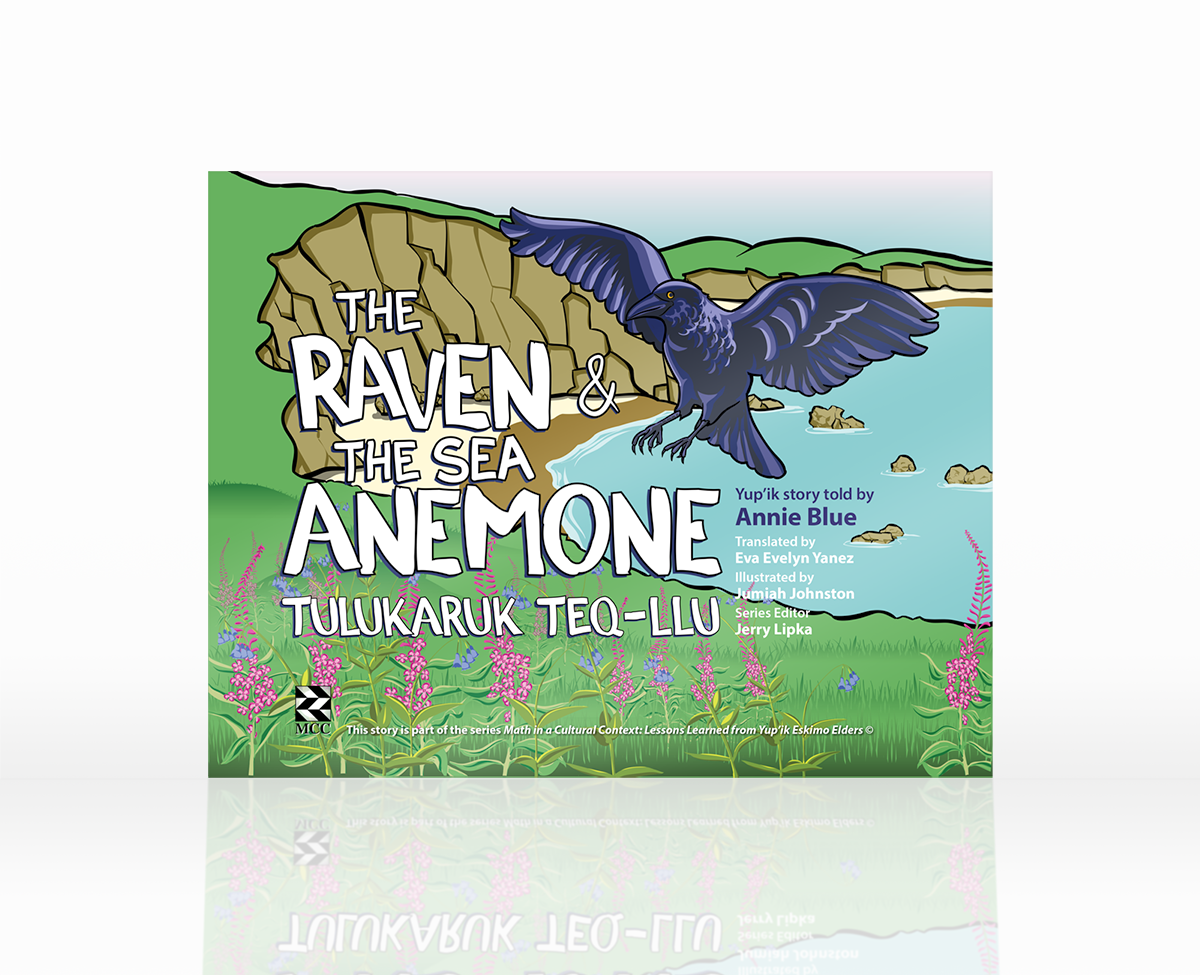 A traditional Yup'ik story told by Annie Blue
A traditional Yup'ik story told by Annie Blue
From the back cover: The late Annie Blue, a revered elder and wonderful storyteller from Togiak, Alaska, continues to contribute to the Math in a Cultural Context (MCC) series and to the next generation through the stories she told. Annie’s deep cultural knowledge, dedication and caring attitude were recognized by the University of Alaska Fairbanks in 2009 when she was awarded an honorary doctorate.
The stories about the mischievous Raven have become favorites of Eva Evelyn Yanez, who listened and learned from Annie’s storytelling beginning in her childhood. Evelyn has retold The Raven and the Sea Anemone to teachers, aides, and students at nine schools that comprise the Southwest Regional School District. The story has also been told at MCC’s workshops for teachers, at summer math institutes, and internationally. It is always well received.
Each Yup’ik story in the MCC series has embedded Yup’ik values about how to live. This story is no different. The MCC series typically integrates Yup’ik stories to further establish the context and also make connections to the mathematics in complementary materials. This story can be used independently of the MCC mathematics series, or it can be used with Measuring Proportionally: Stories, Culture, Math, and Pedagogy; The Importance of Stories in the Math in Cultural Context Program. Connections to mathematics can also be made by emphasizing parts of the story that establish perspective, location, and space.
![]() This work is licensed under a Creative Commons Attribution-NonCommercial-NoDerivatives 4.0 International License| Back to Top
This work is licensed under a Creative Commons Attribution-NonCommercial-NoDerivatives 4.0 International License| Back to Top
The Raven Story and the Boulders: Akagyugnarli
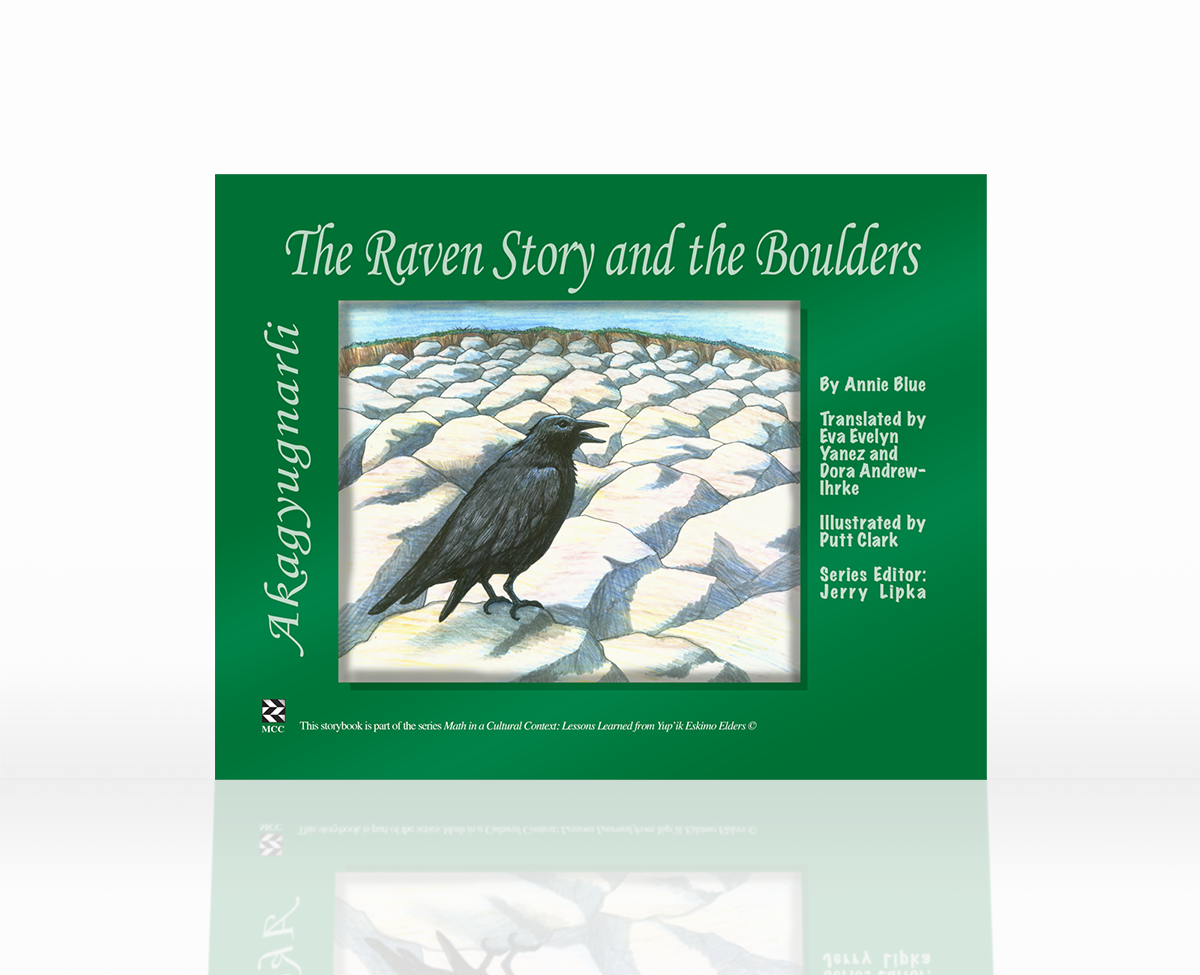 A traditional Yup'ik story told by Annie Blue
A traditional Yup'ik story told by Annie Blue
From the back cover: Annie Blue, a revered ninety-four-year-old elder and wonderful storyteller from Togiak, Alaska, continues to contribute to the Math in a Cultural Context (MCC) series and to the next generation through storytelling. Annie’s deep cultural knowledge, dedication and caring attitude were recognized by the University of Alaska Fairbanks in 2009 when she was awarded an honorary doctorate.
The Raven Story has become a favorite of Eva Evelyn Yanez, who has listened to Annie telling stories since her childhood. Evelyn has often retold Annie’s story at meetings in Anchorage, Fairbanks, elsewhere in the United States, and internationally. It has always been well received.
In this book, the story is told twice: once as Annie has told it and a second time as an illustrated “storyknife” version. Storyknifing is a literary form that combines an oral presentation with quickly drawn illustrations that represent a particular scene. As soon as the scene has been completed and told, the teller will erase the scene and draw the new illustration to align it with the spoken word. In the form presented here, the spoken word has been replaced by the written word, and the scenes are not erased. The story is first told by Annie Blue and translated by both Eva Evelyn Yanez and Dora Andrew-Ihrke and the second storyknife version was retold by Eva Evelyn Yanez.
Complementary Module
This story can be used alongside the Going to Egg Island module.![]() This work is licensed under a Creative Commons Attribution-NonCommercial-NoDerivatives 4.0 International License| Back to Top
This work is licensed under a Creative Commons Attribution-NonCommercial-NoDerivatives 4.0 International License| Back to Top
Slave Girl
 A traditional Yup'ik story told by Annie Blue
A traditional Yup'ik story told by Annie Blue
From the back cover: Annie Blue, a revered elder and marvelous storyteller from Togiak, Alaska, presents Slave Girl . Annie Blue continues to contribute to the education of the next generation through her vast cultural knowledge and her dedication to people. Annie was honored in 2009 with a honorary doctorate from the University of Alaska Fairbanks.
This story takes place during the beginning of the period of time known as the Yup’ik wars. As Annie notes, it was a difficult time especially for young women. This story begins and ends with the importance of family symbols, identity, place, and patterns on parkas that symbolize a person’s lineage and family. The story follows the adventures and misadventures of Slave Girl as her life dramatically changes after she is captured during this time of war.
Her journey provides a view back in time. Students will learn about how Yup’ik people lived during those times, acquire a glimpse of the land, and gain some of the knowledge required to live on and off the land. Elders are keen to point out that these stories provide life lessons for younger generations.
Complementary Modules
Slave Girl can be integrated into the Patterns and Parkas module and the Designing Patterns module.![]() This work is licensed under a Creative Commons Attribution-NonCommercial-NoDerivatives 4.0 International License| Back to Top
This work is licensed under a Creative Commons Attribution-NonCommercial-NoDerivatives 4.0 International License| Back to Top
Star Navigation Reader
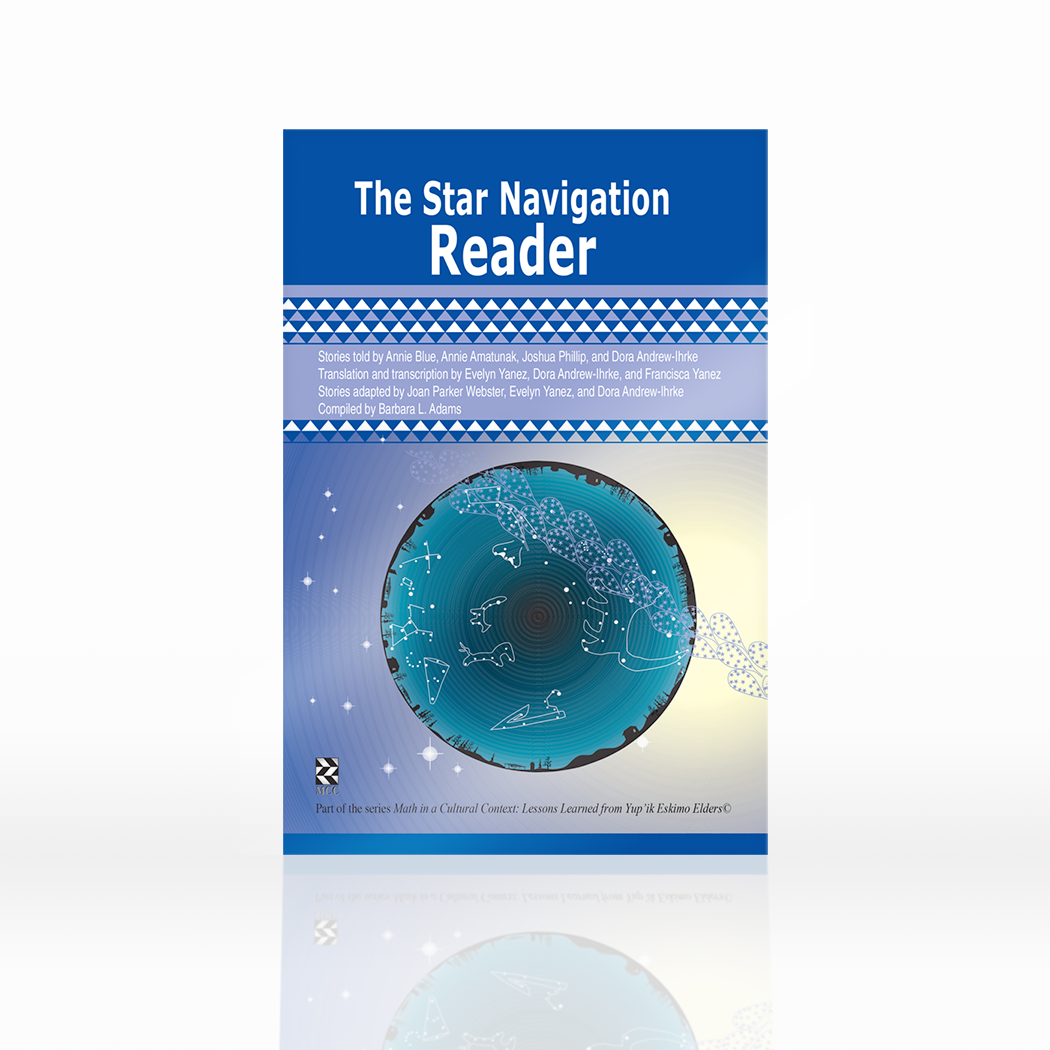 Stories told by Annie Blue, Annie Amatunak, Joshua Phillip, and Dora Andrew-Ihrke
Stories told by Annie Blue, Annie Amatunak, Joshua Phillip, and Dora Andrew-Ihrke
The Star Navigation Reader is a collection of personal accounts and traditional Yup'ik stories. It is designed to accompany the module Star Navigation: Explorations into Angles and Measurement from the series Math in a Cultural Context: Lessons Learned from Yup'ik Eskimo Elders. This reader provides an excellent opportunity for students to investigate a variety of genres, including story narrative and expository text. Traditional stories within the Reader include "How the Raven Brought Light," "Morning Star," and "The Caribou."
Complementary Module
This Reader accompanies the module Star Navigation.![]() This work is licensed under a Creative Commons Attribution-NonCommercial-NoDerivatives 4.0 International License| Back to Top
This work is licensed under a Creative Commons Attribution-NonCommercial-NoDerivatives 4.0 International License| Back to Top


